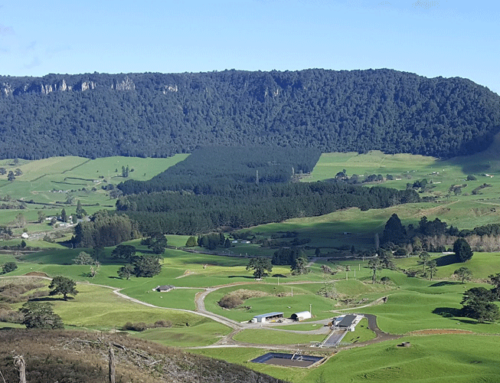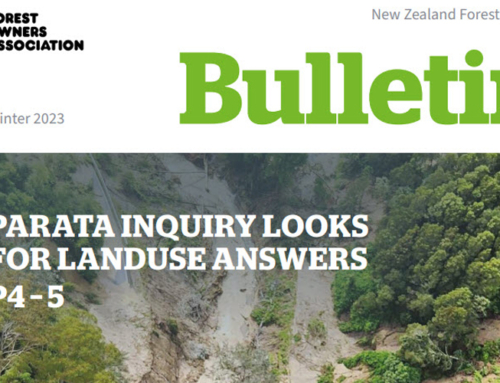July 2019 | The recent drop in log prices has understandably generated interest from investors about how we respond. It’s important to put price changes into the context of your investment.
Forestry investment is long-term
Forestry is a long-term investment which is why people like it.
Investing in alternative assets like forestry is complementary to equities, fixed income and property for diversifying and lowering the risk of an investment portfolio. Forest investment performance is not correlated to the share market.
“Time IN the market is the objective – not timing the market”, says Bert Hughes, CEO of forestry investment company Forest Enterprises.
“The longer you’re in the market, the more likely you are to achieve the long run average log price. Periods of low prices in a several-year harvest programme has less impact on returns than if harvesting over a short period”, says Hughes.
Logs prices fluctuate
As a commodity, log prices are cyclical. The recent price drop is not unprecedented.
“You never know where you are in the cycle, so it’s important you have a plan, and stick to the plan”, says Hughes.
“We can only make plans with the knowledge that the trend is for price and demand volatility”, says Hughes.
Anyone with shares will see the stock market go up and down too.
Good management is vital
Log price is a key risk in forestry investment because it determines returns, so good management is important.
“Our managed forests have a programme set out over several years, and returns are calculated using long run average price rather than using current price”, says Hughes.
“It’s important to react to price changes sensibly and not hinder the long-term goals of our harvest programme”, he adds.
“Forest Enterprises has long-term contracts with our teams cutting and delivering logs so our response to price is measured. Stopping logging and cartage would breach contracts and damage infrastructure which is required long-term”, Hughes explains.
“We are slowing down crews, targeting domestic log grades and taking managed time off. These actions reduce costs in the short term but enable us to continue harvesting as conditions improve.”
Diversity is key
Diversification applies to marketing logs as much as it does to any investment portfolio.
Forest Enterprises believes in supporting local customers to reduce risk in log pricing and routinely supplies domestic sawmills.
“Wairarapa index log price is less affected than Gisborne because we have more local sawmill customers in the Wairarapa. However, we now have two domestic sawmill customers online for Gisborne and trial loads are underway for a third.”
“Currently, returns from domestic customers are better than current export returns but lower than the long run trend price,” Hughes goes on to explain. “In simple terms, greater customer or product diversity means lower price volatility but does not always give higher price.”
Forest Enterprises’ investment in pruning trees produces a price premium for investors, as well as diversifying the product mix from log sales.
Read Forest Enterprises’ latest Log Market Analysis reports:
Log Market Analysis as at October 2023 Q3
Log Market Analysis as at July 2023 Q2
Log Market Analysis as at April 2023 Q1
Log Market Analysis as at January 2023 Q4
Log Market Analysis as at September 2022 Q3
Log Market Analysis as at June 2022 Q2
Log Market Analysis at at March 2022 Q1
Log Market Analysis as at December 2021 Q4
Log Market Analysis as at October 2021 Q3
Log Market Analysis as at July 2021 Q2
Log Market Analysis as at April 2021 Q1
Log Market Analysis as at January 2021 Q4
Log Market Analysis as at October 2020 Q3
Log Market Analysis as at 29 July 2020
Log Market Analysis as at 26 June 2020
Log Market Analysis as at 5 June 2020
Log Market Analysis as at 4 May 2020
Log Market Analysis as at 27 February 2020
Log Market Analysis as at 15 December 2019
Log Market Analysis as at 20 November 2019
Log Market Analysis as at 25 October 2019
Log Market Analysis as at 20 September 2019
Log Market Analysis as at 10 August 2019
Log Market Analysis as at 19 July 2019
Log Market Analysis as at 1 July 2019








